
Escalating hostility between the United States and Iran is complicating travel between Europe, the Persian Gulf, the Arabian Peninsula, and North America. Even as tensions simmer, however, business aviation (BizAv) professionals are identifying new route potentials and establishing new ways to navigate airspace to continue serving their clients.
The tension so far
On June 20, Iran shot down a U.S. unmanned military aircraft. In response, the Federal Aviation Administration (FAA) issued a no-fly order covering all Iranian airspace for all civil aircraft. The FAA has concerns of potential military strikes on civilian flights, either from American or Iranian forces.
The Tehran Flight Information Region (OIIX) doesn’t cover only airspace over Iran’s landmass, however. Iranian airspace includes the Persian Gulf and the Gulf of Oman, as well as the Strait of Hormuz. This makes it challenging for many business travelers and other civilians to reach global business hubs throughout the region, including Doha, Dubai, and Abu Dhabi. In fact, United Airlines flights from New York to Mumbai are canceled indefinitely due to the flight ban.

Following precedent of past conflicts
The FAA’s emergency order applies only to U.S.-based aircraft; however, international aircraft operators are paying attention and following suit. Industry analysts suggest that the potential danger of a civilian aircraft shoot-down over Iran is real and imminent.
In fact, tensions between the U.S. and Iran have led to civilian aircraft deaths in the past. In 1988, a missile fired by American forces struck Iran Air Flight 555, killing 290 people.
More recently, Malaysia Airlines Flight 17 was struck by a missile while flying over a separatist-controlled section of Eastern Ukraine, killing 298 people. This prompted airlines and regulators across the globe to reexamine the way the civilian aviation industry handles airspace over areas of violent conflict.
Middle Eastern airspace is already heavily congested and severely restricted. Flights between Europe, Eastern North America, and Asia pass over the Middle East. Ongoing conflicts and political rivalries have restricted the use of airspace over countries such as Syria and Yemen for the past several years.

Responding and preparing for detours
Both commercial airlines and BizAv industries are adapting to rising tensions in the region and preparing for the possibility of future conflict.
Many internationally based aircraft are avoiding airspace in the strategically important area of Southern Iran surrounding the Persian Gulf and the Strait of Hormuz, while continuing to fly into Tehran and fly over Northern Iran.
Meanwhile, other aircraft are avoiding airspace within the Tehran OIIX altogether. These flights are using alternative, longer routes over Israel, Jordan, and Saudi Arabia — or over the Caspian Sea and Turkmenistan.
Regardless of the origin and destination of your BizAv flight, the safety of your crew and passengers are of the utmost importance. Following FAA guidance, as well as staying on top of global affairs, will help prepare you to make safe business travel decisions.
The clock is ticking for thousands of aircraft in the United States that have not yet gotten the necessary upgrades to meet the compliance standards of Automatic Dependent Surveillance-Broadcast (ADS-B), a new surveillance technology used for air traffic control. The January 2020 deadline is fast-approaching, but many aircraft owners are unsure of whether to make the leap.
The cost of upgrading to meet the new program’s standards can be steep, particularly for older aircraft that lack much of today’s modern tracking technology. Few options for selling jets and values that sit far below the cost of compliance may force many jet owners to retire their aircraft.
What is ADS-B?
ADS-B is a new air traffic surveillance system implemented by the Federal Airline Administration (FAA) to replace radar technology. The system has been designed to improve safety and efficiency in the air, reduce costs, and minimize the environmental impacts of flying. ADS-B is the FAA’s attempt to modernize air traffic control and improve the safety of pilots and their passengers.
Beginning January 2020, all aircraft must be equipped with ADS-B Out systems to fly in most controlled airspace. ADS-B Out provides the ability to transmit flight data to air traffic controllers and other aircraft equipment with ADS-B In, the counterpart system.
ADS-B In is not required for compliance, but the FAA encourages it to allow pilots to utilize all the benefits of the system, including weather and traffic pattern updates.

Options for owners
Although upgraded tracking systems stand to benefit the aviation industry, the FAA-mandated compliance requirements are troublesome to many aircraft owners, particularly those who own smaller aircraft such as private jets.
Cost is the major issue. For older aircraft with outdated systems, the cost of upgrading to ADS-B standards could cost owners $90,000 or more. This cost includes the need for new transponders, GPS receivers, antennas and other equipment. Newer jets may be able to trim these costs significantly, but the expense may still outweigh the value of some smaller jets. Downtime expenses are also a factor for jet owners that lease their aircraft out as a revenue stream.
 The cost of not upgrading may be just as steep. Without being ADS-B compliant, aircraft will not be allowed to fly in controlled airspace. This puts a damper on many aircraft and their capabilities. If jets need to fly into this airspace regularly, the owners face a difficult choice: upgrade or retire.
The cost of not upgrading may be just as steep. Without being ADS-B compliant, aircraft will not be allowed to fly in controlled airspace. This puts a damper on many aircraft and their capabilities. If jets need to fly into this airspace regularly, the owners face a difficult choice: upgrade or retire.
Selling old aircraft at this time isn’t easy. With the FAA deadline looming over their heads, aircraft buyers are thinking to the future and purchasing already compliant aircraft. This leaves aircraft owners with the option to scrap their jets to earn back some of their investment.
If you are the owner of a private aircraft that is not yet ADS-B compliant, now is the time to weight your options. If you choose not to upgrade, you may still be able to sell your aircraft, so call an experienced aircraft broker and learn more about your options in the market.
For most travelers throughout the United States, commercial airline travel is the standard way to get from one place to another. Charter flights and private air travel are also options, but these often come at higher prices. Another more affordable form of air travel — flight-sharing — may soon be possible for U.S. travelers, making it easier to travel to and from destinations while lowering the costs of flying for both pilots and their passengers.
Flight-sharing and its status in the United States
Flight-sharing is essentially a method of carpooling via aircraft. Licensed pilots find passengers who want to travel to the pilots’ destinations aboard their private aircraft for a fee, which helps offset the cost of flying. In doing so, pilots spend less money enjoying their hobby while passengers receive less expensive flights.
 For decades, pilots have been identifying potential passengers by posting flight schedules on bulletin boards and communicating with passengers directly, but people are attempting to simplify this process using new technology. Apps and websites allow passengers to search for flights when and where they desire as well as connect with pilots offering those flights.
For decades, pilots have been identifying potential passengers by posting flight schedules on bulletin boards and communicating with passengers directly, but people are attempting to simplify this process using new technology. Apps and websites allow passengers to search for flights when and where they desire as well as connect with pilots offering those flights.
However, flight-sharing via mobile apps isn’t allowed in the United States. The Federal Aviation Administration (FAA) has previously shut down efforts to legalize flight-sharing in the U.S., claiming pilots would become “common carriers” and subject to more restrictions and require more licenses. Times may be changing, though, as new bills are emerging to determine who’s considered a “common carrier” in the aircraft industry, potentially lifting restrictions on pilots who want to opt into these service types.
An overseas flight-sharing model
Other foreign countries —especially those in the European Union (EU) — don’t share the FAA’s view on flight-sharing. In the United Kingdom (U.K.), this method is a fast-growing industry and could serve as a model to a budding flight-sharing industry in the U.S.
With the help of the European Aviation Safety Agency (EASA), pilots and consumers can fly safely and efficiently using flight-sharing services. In fact, the EASA created a safety charter that identifies rules for both pilots and passengers operating under flight-sharing programs, and numerous platforms have signed on.
One such platform, Wingly, has seen tremendous success, allowing 150,000 users to utilize the private aircraft over 10,000 licensed pilots operate throughout England, France, and Germany.

The U.K. has also implemented other restrictions on flight-sharing to keep the practice safe, effective, and non-disruptive to commercial air travel: Flight-sharing aircraft can only carry up to six passengers each, passengers and pilots split the direct costs of flying, and neither passengers nor pilots can profit from the flights.
Potential benefits of flight-sharing to U.S. markets
If the U.S. legalizes flight-sharing via mobile apps, it could have numerous potential benefits to pilots and passengers across the nation.
- Rural American access — In the commercial aviation sector, rural America is largely considered “fly-over” territory, making it difficult for rural passengers to fly to and from rural areas. Flight-sharing operating out of smaller local airports across each state could provide opportunities for these passengers to travel more often.
- Less burden on pilots — Flying is an expensive hobby, especially when the burden of cost is entirely on the pilot. Pilots must log a certain number of flight hours per year to remain licensed. If passengers were more readily available, pilots could defer costs to others, afford to fly more often, and remain licensed.
- More BizAv opportunities — Flight-sharing provides opportunities for those in the business aviation sector by creating more flight options for pilots and passengers and offering travel at more affordable prices.
If the U.S. legalizes flight-sharing, it has the potential to open doors in the aviation industry. By following the lead of other countries like those in the EU, American pilots may experience a surge in localized air travel and an interest in flying.
Purchasing a business or private jet while flight-sharing is at a tipping point may prove advantageous for flight enthusiasts — and open a revenue stream to owners as they can sell flight-sharing services when they’re not enjoying their private jets themselves.
The expert jet brokers at L & L International are here to help you acquire the perfect jet. Need to sell your jet? We can assist with that, too.
Contact the private aviation professionals online, at
sales@L-Lint.com, or at
+1 (305) 754-3313.
It’s the start of a new year and, traditionally, time for holding tight to resolutions and making predictions for the year ahead. In that spirit, we resolve to make our best predictions for the private and business aviation industry based on trends, past occurrences, and expert opinions for 2018.
The Tax Cuts and Jobs Act will provide a boost for private and business aviation. The recently approved tax overhaul is good news for business aviation as the biggest benefit is new owners’ abilities to depreciate jets 100% during the first year of ownership — as opposed to five years — which should also increase demand. The provision applies to both new and pre-owned aircraft. Tax breaks for individuals and private corporations may also spur interest in aircraft purchases.
However, it’s not all good news. The bill also repeals like-kind exchanges, although the depreciation provision will basically offset the change. And a one-time repatriation tax may cause leaders of multinational companies to delay purchasing business aircraft until next year. This could play into the overarching prediction that deliveries of private jets will remain flat in 2018.
The business jet market will be slow to recover. Despite the so-called “Trump Bump” insiders expected with the new administration and tax overhaul, financial experts predict that aircraft sales will remain stagnant in the near term and that 2018 will be a “reset” year for the market. According to the AINonline article, UBS Global Research forecasters stated that, “The manufacturers appear to be planning for flat industry deliveries in 2018 with new model introductions—Cessna Citation Longitude, Gulfstream G500 and Bombardier Global 7000—offsetting declines in certain older legacy products.” This means Bombardier, Gulfstream, and Textron should see increased deliveries in 2018 while Dassault and Embraer Executive Jets will likely see fewer.
 FAA oversight will likely heighten. Illegal charter operations — most commonly operating on-demand charter flights without proper Part 135 certification — is a growing problem, and the National Air Transportation Association (NATA) wants the Federal Aviation Association (FAA) to crack down. The FAA has historically weakened or heightened its regulatory enforcement according to events and pressures from the pubic or aviation organizations. In calling for greater enforcement, NATA reiterated its position that incidents involving illegal charter operators “mar” the general aviation safety record. In recent years, the FAA has tended to let operators find and correct their own problems. However, with pressure from NATA, FAA enforcement policies could be on the upswing.
FAA oversight will likely heighten. Illegal charter operations — most commonly operating on-demand charter flights without proper Part 135 certification — is a growing problem, and the National Air Transportation Association (NATA) wants the Federal Aviation Association (FAA) to crack down. The FAA has historically weakened or heightened its regulatory enforcement according to events and pressures from the pubic or aviation organizations. In calling for greater enforcement, NATA reiterated its position that incidents involving illegal charter operators “mar” the general aviation safety record. In recent years, the FAA has tended to let operators find and correct their own problems. However, with pressure from NATA, FAA enforcement policies could be on the upswing.
New technologies will allow for new product innovations. The FAA has loosened its stance and now allows lower-cost electronics inside cockpits, paving the way for advanced product developments and upgrades for older jets. Smaller head-up displays (HUDs) will allow for their placement in smaller aircraft, thus enhancing their safety, and advancements in sensor technologies will allow pilots to see through thick fog. Other advancements, such as high-speed Ka-band connectivity, will allow passengers enhanced internet connectivity while traveling.
It’s difficult to know whether tax cuts will be enough to boost aircraft sales, but combined with low prices on new and used private and business jets, sales should begin to pick up and really gain momentum going into 2019. In addition, constant technology advancements are sure to offer better and safer flight experiences. With so much to look forward to in the aviation industry this year, isn’t it time you got on board?
Earlier this month, President Donald Trump announced plans to reform the Air Traffic Control (ATC) system, aiming to shift operational control from the Federal Aviation Administration (FAA) to a private organization. We talked about this back in March, and it appears President Trump will move forward with plans to implement this change.
While it is uncertain exactly how this nonprofit organization would function, there could be widespread ramifications for private jet owners and business jet travelers as well as large airlines.
The argument for reform
In a June 5 speech, Mr. Trump stated his belief that the current ATC system is “antiquated” and “broken.” Reform proponents agree with him. As more countries move toward satellite-based GPS and electronic recordkeeping, there is a general sentiment that the FAA is not structured to keep pace. U.S. general aviation now serves over 1 billion passengers annually, and reform supporters argue that ATC efficiency and reliability are not keeping pace with demand.
The opposition
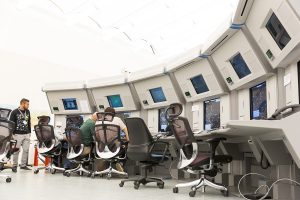 On the other hand, many groups within aviation oppose the privatization. Many of them arguing that the United States has more aviation activity than any other nation, and air travel remains safe and reliable. Detractors also point out that the FAA has been moving toward modern GPS systems at a reasonable rate — only constrained by budget, they say — and is on schedule to have fully transitioned by 2020.
On the other hand, many groups within aviation oppose the privatization. Many of them arguing that the United States has more aviation activity than any other nation, and air travel remains safe and reliable. Detractors also point out that the FAA has been moving toward modern GPS systems at a reasonable rate — only constrained by budget, they say — and is on schedule to have fully transitioned by 2020.
Additionally, critics worry about the fees a private organization would be able to levy. Private jet owners and business jet travelers, specifically, are concerned that these kinds of fees will affect them disproportionately. Commercial airlines would have an easier time absorbing extra fees and could raise prices to do so. Beyond that, several aviation industry leaders have voiced concern that the board for such an organization could be stacked with representatives more favorable to commercial airlines.
Proposed benefits
 Despite the criticism, ATC reform could improve air traffic technology at a faster rate while leaving business jet owners and private aviation groups largely unscathed. Instead of being one of many FAA responsibilities, air traffic control could become less expensive and more effective. Private jet owners and business fliers could have more flexibility in planning flights and use modern technology for better safety and efficiency. Business aviation organizations, however, remain skeptical.
Despite the criticism, ATC reform could improve air traffic technology at a faster rate while leaving business jet owners and private aviation groups largely unscathed. Instead of being one of many FAA responsibilities, air traffic control could become less expensive and more effective. Private jet owners and business fliers could have more flexibility in planning flights and use modern technology for better safety and efficiency. Business aviation organizations, however, remain skeptical.
“No one should confuse ATC modernization with ATC privatization — the two are very different concepts,” National Business Aviation Association CEO Ed Bolen said in a Flying magazine interview.
The specifics of the potential reform remain to be seen. While there is a sense of uncertainty surrounding the proposed system, business aviation and private jet ownership will remain viable modes of comfortable, luxurious transportation.
President Donald Trump told executives and directors from several airlines and airports that he favors privatizing U.S. air traffic control (ATC). Industry leaders are especially interested in the privatization debate due to the Federal Aviation Administration (FAA) Modernization and Reform Act of 2012, which authorizes FAA program funding, having expired in 2016.
Congress has renewed interest in privatizing just the ATC — as opposed to the entire FAA. The new president is a willing audience for two reasons: He’s a longtime private jet owner — even briefly operating an eponymous airline — and wants to reduce federal regulatory burden.
The debate, however, is not new and dates back to the Reagan administration. Former President Bill Clinton sought to reform the FAA and ATC. Two decades later, the discussion has moved to the possibility of ATC privatization as a nonprofit operating under FAA oversight. The proposals may have changed, but the underlying issues haven’t. The U.S. operates the largest, busiest, and safest ATC system in the world, and many argue if it’s not broken, we shouldn’t fix it.
According to the Forbes article, privatization could reduce operating costs and improve safety and efficiency. Cost savings, however, would likely be based on personnel reductions and improved systems, both of which the government could accomplish.
Several countries have privatized their aviation systems or system components. In Germany and France, government-owned companies manage air traffic; British and Canadian air traffic control is privatized.
Of course, air traffic volume in other countries doesn’t compare with the U.S., in which airlines operated 9.6 million departing flights in 2014. Canada had only 1.3 million commercial flights depart that year.
 One benefit many cite is that privatization could lead to faster modernization, benefiting all aircraft and fliers. The project, called NextGen, is supposed to increase the nation’s flight capacity and improve on-time arrivals but has been a more lengthy and expensive process than planned.
One benefit many cite is that privatization could lead to faster modernization, benefiting all aircraft and fliers. The project, called NextGen, is supposed to increase the nation’s flight capacity and improve on-time arrivals but has been a more lengthy and expensive process than planned.
So, what does this all mean for private jet owners? Should prospective buyers wait until any uncertainty is resolved?
Probably not. There’s no indication that privatizing is a priority for the new administration — even if the president told aviation executives he favors it. Given the complexity of the U.S. system and the FAA success record, it’ll likely be difficult to demonstrate the value in making a major change and expending the political capital to bring it about.
Automatic Dependent Surveillance-Broadcast (ADS-B) technology uses satellite navigation and GPS data to track aircraft both for air traffic control ground station benefit and to allow pilots more complete pictures of air traffic in surrounding areas.
Federal Aviation Administration (FAA) Title 14 of the Code of Federal Regulations (CFR) 14 CFR Title 14 91.225 and 91.227 require ADS-B out technology in all aircraft by Jan. 1, 2020. In an effort to encourage early installation, the FAA, in collaboration with the Aircraft Owners and Pilots Association (AOPA), the Aircraft Electronics Association, and the General Aviation Manufacturers Association, opened a rebate program in September for those who install and prove ADS-B out equipment installation.
The rebate program provides “owners of U.S.-registered, fixed-wing, single-engine piston aircraft that were first registered before January 1, 2016,” a $500 rebate when they purchase and install ADS-B out equipment. The rebate is only available to owners who didn’t previously have ADS-B out equipment installed or purchased and scheduled for install before the rebate program began. FAA personnel plan to issue rebates for a one-year period, ending September 2017, or until they’ve issued 20,000 rebates, whichever comes first.
To qualify for rebates, pilots with eligible aircraft must go through a five-step process.
 Choose proper ADS-B out equipment.
Choose proper ADS-B out equipment.- Reserve a rebate on the FAA website.
- Install the ADS-B out equipment.
- Perform a qualifying flight to validate the ADS-B equipment.
- Claim a rebate.
According to the APOA, some pilots have difficulties with steps 4 and 5 in the process because they don’t perform the qualifying flight properly or because they don’t wait at least one hour after a flight to request the Public ADS-B Performance Report (PAPR) required to complete the rebate process. Pilots who review the requirements and follow them closely, however, should have no problem securing the $500 rebate, so long as they complete all the steps before the FAA awards the maximum number of rebates or the one-year time frame has closed.
[et_pb_section admin_label=”Section” fullwidth=”on” specialty=”off” background_image=”https://www.l-lint.com/wp-content/uploads/2016/03/slider_1_1.jpg” transparent_background=”off” allow_player_pause=”off” inner_shadow=”off” parallax=”off” parallax_method=”off” padding_mobile=”off” make_fullwidth=”off” use_custom_width=”off” width_unit=”on” make_equal=”off” use_custom_gutter=”off”][et_pb_fullwidth_header admin_label=”Fullwidth Header” title=”CORPORATE JET INSIDER” background_layout=”light” text_orientation=”center” header_fullscreen=”off” header_scroll_down=”off” background_url=”https://www.l-lint.com/wp-content/uploads/2016/03/slider_1_1.jpg” background_overlay_color=”rgba(255,255,255,0.82)” parallax=”off” parallax_method=”off” content_orientation=”center” image_orientation=”center” custom_button_one=”off” button_one_letter_spacing=”0″ button_one_use_icon=”default” button_one_icon_placement=”right” button_one_on_hover=”on” button_one_letter_spacing_hover=”0″ custom_button_two=”off” button_two_letter_spacing=”0″ button_two_use_icon=”default” button_two_icon_placement=”right” button_two_on_hover=”on” button_two_letter_spacing_hover=”0″] [/et_pb_fullwidth_header][/et_pb_section][et_pb_section admin_label=”section”][et_pb_row admin_label=”row”][et_pb_column type=”3_4″][et_pb_post_title admin_label=”Post Title” title=”on” meta=”on” author=”off” date=”on” categories=”on” comments=”off” featured_image=”off” featured_placement=”below” parallax_effect=”on” parallax_method=”on” text_orientation=”left” text_color=”dark” text_background=”off” text_bg_color=”rgba(255,255,255,0.9)” module_bg_color=”rgba(255,255,255,0)” title_all_caps=”off” use_border_color=”off” border_color=”#ffffff” border_style=”solid”] [/et_pb_post_title][et_pb_text admin_label=”Text” background_layout=”light” text_orientation=”left” use_border_color=”off” border_color=”#ffffff” border_style=”solid”]
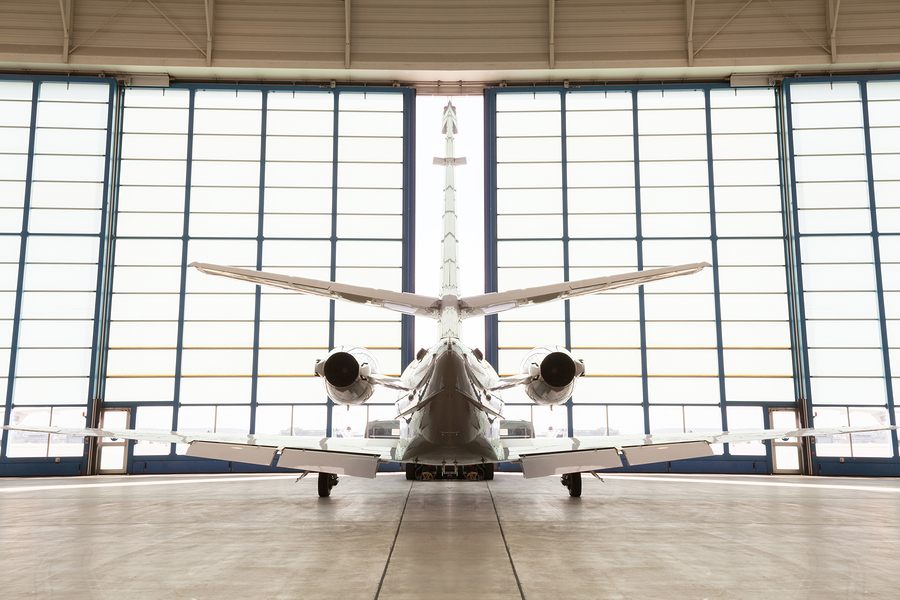
The Federal Aviation Administration (FAA) released changes to its existing policy regarding the non-aeronautical use of aviation facilities June 15. Specifically, the policy update addresses the use of hangars located at federally obligated airports. Airports that have not received federal assistance in the form of Airport Improvement Program (AIP) grants or federal conveyances are not subject to these constraints.
Overall, the greatest change to the existing policy is in how hangars may be used at airports that have received federal funds. In the past, they could only be used as storage for aeronautical use, and that definition was very narrow. The policy update, however, allows for the expanded use of hangars.
Members of the Aircraft Owners and Pilots Association (AOPA) have been lobbying for an expansion of the definition of “aeronautical use” for a number of years and, as a group, consider this expanded definition a win. According to the AOPA, some of the most important changes that the policy update enables include:
- Building experimental and kit aircraft in hangars — In the past, only the final assembly was permitted at the hangar, but now, more of the work can be done on-site. The AOPA maintains that this is an aeronautical activity and should be permitted in airport hangars.
- Use of empty hangars to generate revenue — However, there are a couple of caveats. According to the FAA policy, the airport must get FAA approval before entering into a long- or short-term lease. Once a 30-day lease has been approved, it can be renewed without further FAA involvement. Also, the space that is leased must be quickly recoverable should the need arise to use the leased hangar.
- Storage of non-aeronautical items in unused hangars — Another qualification with this change: The items stored in the hangar cannot interfere with the intended aeronautical use of the hangar.
- Expansion of the “operational aircraft” definition — “Operational aircraft” now includes aircraft that are down for maintenance. Airport sponsors now have the ability to determine if they will allow such aircraft to be stored in an airport hangar while maintenance is being performed.
In all, these changes to the FAA hangar policy are designed to allow federally obligated airports more control of hangar space, especially when there is excess hangar capacity. If you have additional questions about these hangar requirements, the FAA offers an FAQ webpage.
[/et_pb_text][/et_pb_column][et_pb_column type=”1_4″][et_pb_sidebar admin_label=”Sidebar” orientation=”right” area=”sidebar-1″ background_layout=”light” remove_border=”off”] [/et_pb_sidebar][/et_pb_column][/et_pb_row][/et_pb_section]
 A drone operating over the Lake Fire in California’s San Bernardino National Forest in June caused firefighters to halt combat flying due to the risk of a midair collision. This very real danger could cost expensive air tankers and, more importantly, firefighters’ lives. As a result, the fire expanded and unfortunately gave drone flying some damaging press.
A drone operating over the Lake Fire in California’s San Bernardino National Forest in June caused firefighters to halt combat flying due to the risk of a midair collision. This very real danger could cost expensive air tankers and, more importantly, firefighters’ lives. As a result, the fire expanded and unfortunately gave drone flying some damaging press.
Unmanned aircraft systems (UAS), otherwise known as drones, are inherently different from manned aircraft in terms of altitude, distance, maintenance, flight time, and operating controls, and mixing them into the aviation community is placing some complex challenges in the hands of the Federal Aviation Administration (FAA). On Feb. 23, 2015, the FAA released a public notice with regard to UAS and continues an outreach program to spread the word about safe and responsible flying.
Know Before You Fly is an educational campaign founded by the Association for Unmanned Vehicle Systems International (AUVSI), the Academy of Model Aeronautics (AMA), and the Small UAV Coalition, in partnership with the FAA. It provides information for recreational flyers, businesses, and public entities on how to fly drones safely and responsibly.
Some of the recreational drone-flying safety guidelines include:
- Flying no higher than 400 feet
- Keeping your drone in sight at all times
- No flying within five miles of an airport
- Avoiding sensitive infrastructure such as power stations
Examples of commercial uses of drones include:
- Professional real estate or wedding photography
- Cinematography for film or television
- Contract photography work for mapping and land surveys
Let’s Fly Wisely, an organization of companies using drones for positive purposes in Wise County, Virginia, has been promoting the use of drones to make package deliveries, including delivering medicine to rural medical clinics.
While stories about unsafe drone flying cause negative press, lawmakers are working to find the best way to balance the needs of individuals, businesses, and media by releasing and promoting drone safety information. Simultaneously, drone flying is making a positive impact in many ways, and it’s important to keep this in perspective as the UAV trend and the opportunities drones pose continue to grow.
Contact L & L International if you need assistance in purchasing or selling a private jet. You can reach our sales specialists today at sales@L-Lint.com, call us any time at +1.305.754.3313, or visit us online.




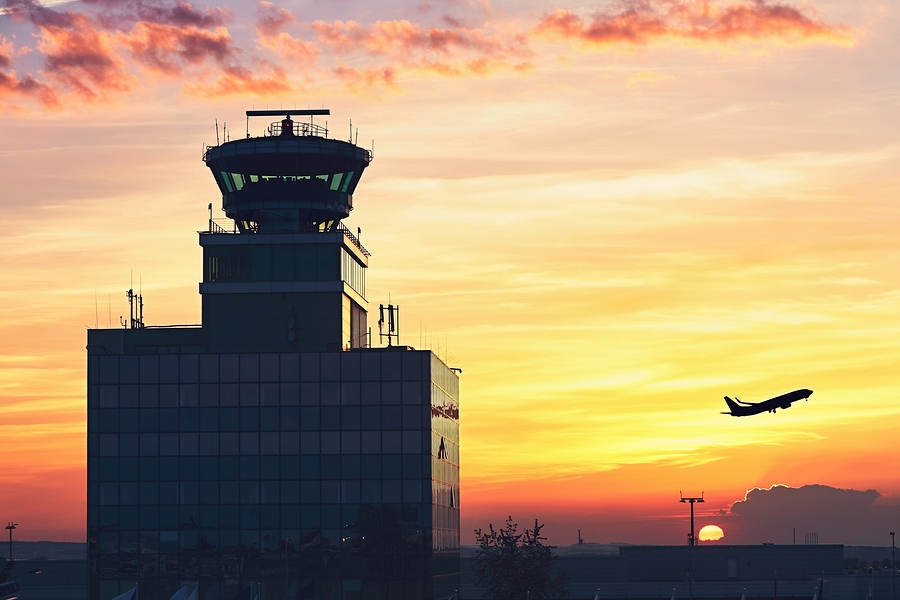

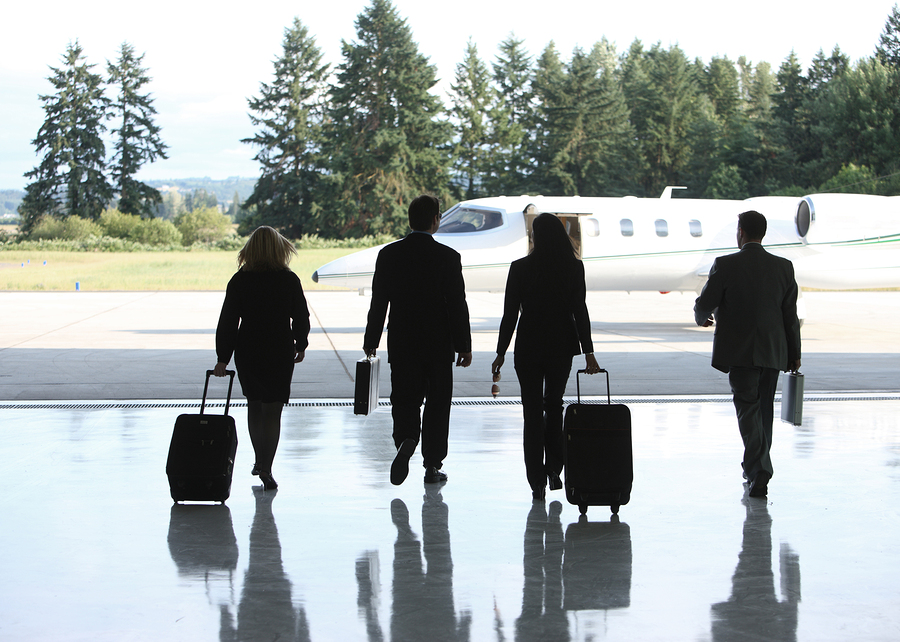

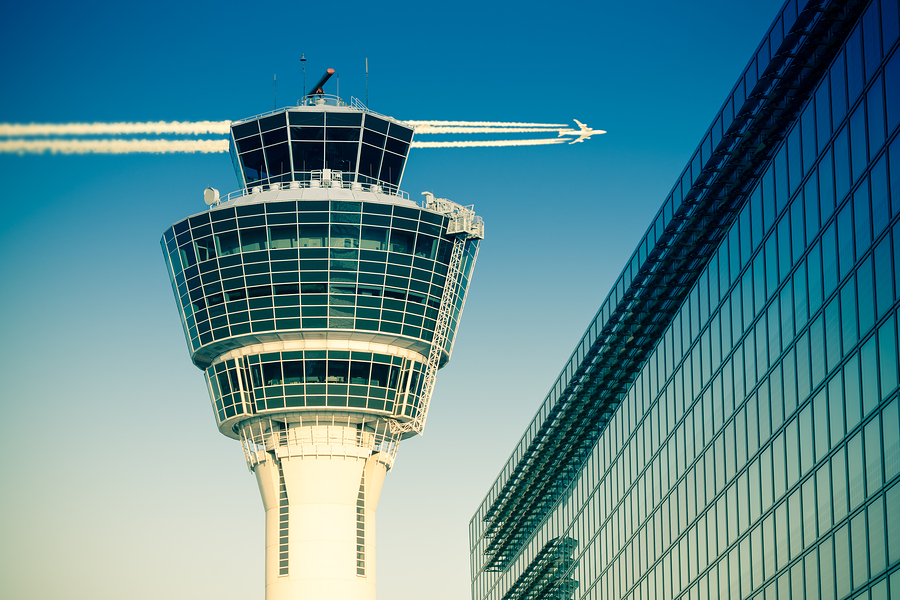
 On the other hand,
On the other hand, 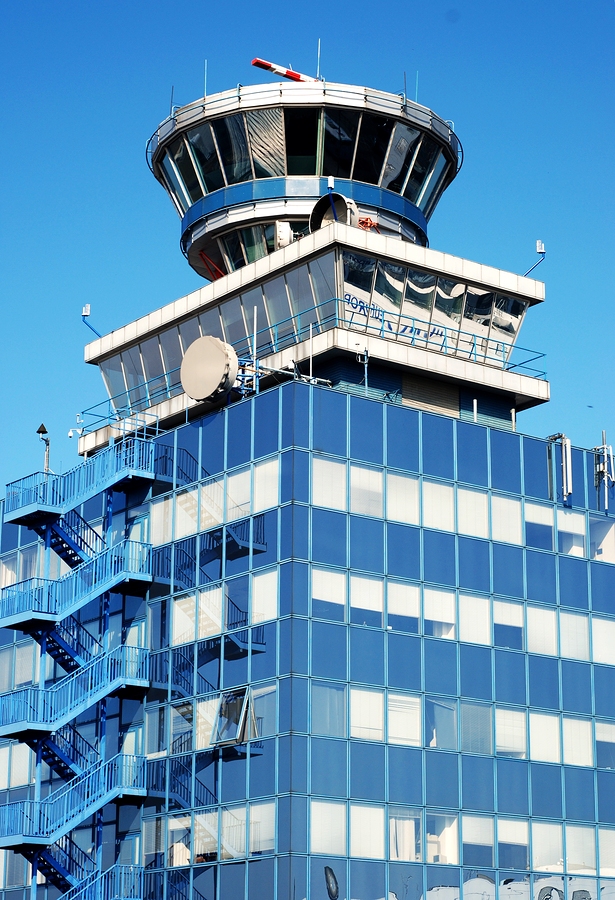


 Choose proper ADS-B out equipment.
Choose proper ADS-B out equipment.
 A
A